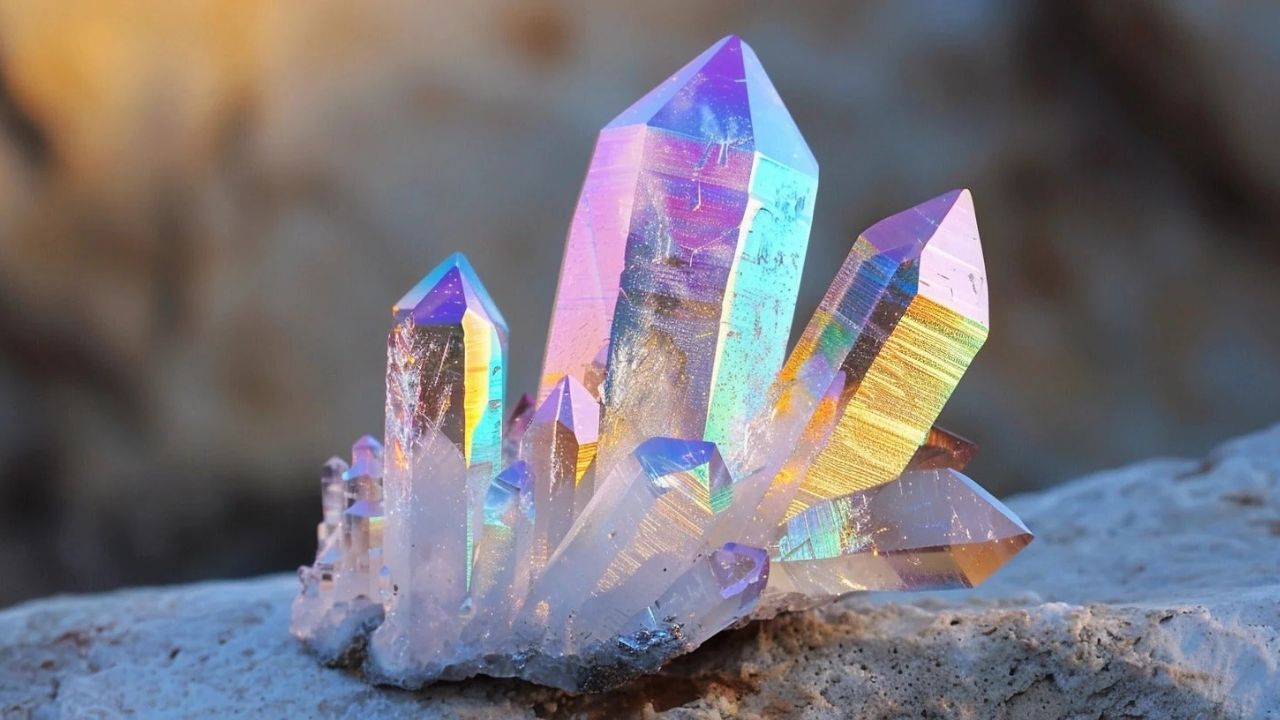
Crystals have fascinated humans for centuries, shimmering with beauty and mystery. But what makes them so special? Crystals are solid materials whose atoms are arranged in highly ordered, repeating patterns. This unique structure gives them their stunning shapes and properties. From ancient healing practices to modern technology, crystals play a significant role in various aspects of life. Did you know that quartz, one of the most common crystals, is used in watches and electronics? Or that some people believe crystals can balance energy and promote well-being? Whether you're a science enthusiast or just curious, these 30 facts about crystals will enlighten and intrigue you.
Key Takeaways:
- Crystals are fascinating structures found in nature and have unique properties. They come in various shapes, sizes, and colors, and are used in watches, computer chips, and even for healing practices.
- Some famous crystals include the Hope Diamond, Cullinan Diamond, and Star of India. Crystals can also glow under ultraviolet light, grow in space, and have been used for centuries for their healing properties.
What are Crystals?
Crystals are fascinating structures found in nature and created by humans. They have unique properties and come in various shapes, sizes, and colors. Let's dive into some intriguing facts about these beautiful formations.
-
Crystals are solid materials whose atoms are arranged in a highly ordered, repeating pattern.
-
The word "crystal" comes from the Greek word "krystallos," meaning "ice."
-
Quartz is one of the most common minerals on Earth and forms crystals.
-
Crystals can form naturally or be grown artificially in laboratories.
-
The largest crystal ever found is a beryl crystal from Madagascar, measuring 18 meters long and weighing 380,000 kilograms.
Types of Crystals
Crystals come in many different types, each with unique characteristics. Here are some of the most well-known types.
-
Amethyst is a purple variety of quartz often used in jewelry.
-
Diamonds are crystals made of carbon and are the hardest natural material.
-
Salt crystals, also known as halite, form from evaporating salty water.
-
Snowflakes are ice crystals that form in the atmosphere and fall to Earth.
-
Rubies and sapphires are both varieties of the mineral corundum, differing only in color.
How Crystals Form
The formation of crystals is a complex process influenced by various factors. Here's how it happens.
-
Crystals form when a liquid cools and starts to solidify, allowing atoms to arrange in a structured pattern.
-
The rate of cooling affects the size of the crystals; slower cooling results in larger crystals.
-
Crystals can also form from solutions when the solvent evaporates, leaving the solute to crystallize.
-
Pressure and temperature changes can cause minerals to recrystallize into new crystal forms.
-
Some crystals form from vapor, such as those found in volcanic vents.
Uses of Crystals
Crystals are not just beautiful; they have practical applications in various fields. Let's explore some uses.
-
Quartz crystals are used in watches and clocks to keep accurate time.
-
Silicon crystals are essential in the production of computer chips and electronic devices.
-
Crystals are used in lasers for their ability to focus light.
-
Salt crystals are used in food preservation and seasoning.
-
Crystals are used in healing practices and believed to have metaphysical properties.
Famous Crystals
Some crystals have gained fame due to their size, beauty, or historical significance. Here are a few notable examples.
-
The Hope Diamond is a famous blue diamond known for its size and supposed curse.
-
The Cullinan Diamond, the largest gem-quality diamond ever found, was cut into several pieces, some of which are part of the British Crown Jewels.
-
The Star of India is a large, star sapphire displayed at the American Museum of Natural History.
-
The Koh-i-Noor Diamond, originally from India, is now part of the British Crown Jewels.
-
The Blue John Fluorite is a rare and beautiful crystal found only in Derbyshire, England.
Fun Facts about Crystals
Crystals have some surprising and fun aspects that make them even more interesting. Here are a few.
-
Some crystals can glow under ultraviolet light, a property known as fluorescence.
-
The shape of a crystal is determined by its internal atomic structure.
-
Crystals can grow in space, and experiments have shown they can form more perfectly in microgravity.
-
The largest geode ever found is the Pulpí Geode in Spain, with crystals up to 2 meters long.
-
Crystals have been used in various cultures for centuries for their supposed healing and protective properties.
The Sparkling Truth
Crystals aren't just pretty rocks. They hold a world of history, science, and mystery. From ancient healing practices to modern technology, crystals have played a significant role in human culture. They can be found in watches, computers, and even spacecraft. Some believe they have healing powers, while others appreciate their beauty and rarity. Whether you're a collector, a scientist, or just someone who enjoys their sparkle, there's no denying the fascination crystals bring. Next time you see a crystal, remember it's more than just a shiny object. It's a piece of the Earth's history, a marvel of nature, and a testament to the wonders of our planet. Keep exploring, keep learning, and let the magic of crystals continue to inspire you.
Frequently Asked Questions
Was this page helpful?
Our commitment to delivering trustworthy and engaging content is at the heart of what we do. Each fact on our site is contributed by real users like you, bringing a wealth of diverse insights and information. To ensure the highest standards of accuracy and reliability, our dedicated editors meticulously review each submission. This process guarantees that the facts we share are not only fascinating but also credible. Trust in our commitment to quality and authenticity as you explore and learn with us.
